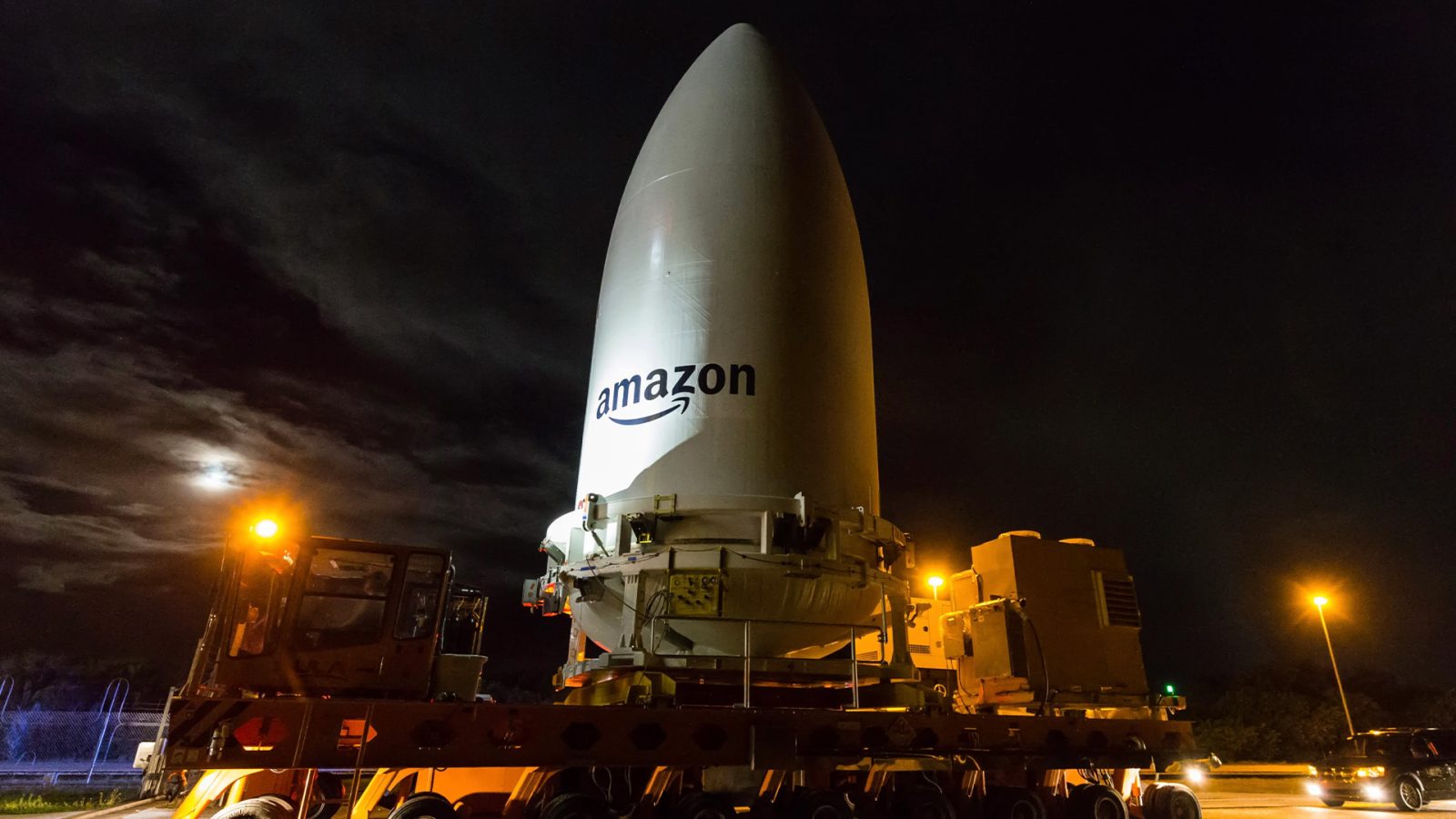
ULA is prepared to launch the first batch of Amazon Kuiper test satellites into orbit on the final Atlas V 501 rocket. The satellites, which were initially intended for Vulcan, have been mated with the rocket and enclosed in its payload fairing. Project Kuiper’s “Protoflight” mission is set to launch Friday with a window opening up at 2:00 P.M.
ULA prepares for Amazon’s first launch
On Friday, October 6, ULA is set to launch its second Atlas of the year, this time with a rare commercial launch rather than for the military or NASA. Late last week the two Project Kuiper test satellites were encapsulated into its payload fairing and hoisted up to be mated on the Atlas V rocket. One of nine Amazon purchased to deploy its satellites into low Earth orbit.
Project Kuiper is a proposed satellite internet constellation by online retailer and tech company Amazon. It’s expected to be a direct competitor to SpaceX’s Starlink service with direct to consumer sales, however, Starlink has a pretty big lead already.
Named Kuipersat-1 and Kuipersat-2, the two spacecraft will be used to test system on orbit with ground stations and receivers similar to SpaceX’s TinTin test satellites for Starlink. Originally these were suppose to fly on a Vulcan rocket as a ride share but Vulcan is now most likely delayed until early next year. With Amazon is getting close to a deadline of having half of its constellation in orbit by April 2026 so it used one of its purchased Atlas V rockets to perform this mission.
Amazon purchased the remaining nine Atlas V rockets back in 2021 for use to deploy its Kuiper satellites. Amazon has also signed contracts with ULA for its Vulcan rocket, Blue Origin with New Glenn, and Arianespace with the Ariane 6, but all three of those vehicles are now experiencing serious delays. Amazon shareholders have even filed suit against Amazon since SpaceX, the most reliable launcher, was not included those contract negotiations.
Join our Discord Server: Join the community with forums and chatrooms about space!
Final Atlas V 501
For this launch, ULA will be using its 501 variant of the Atlas V rocket. The smallest version (that uses the 5m version 4m fairing) of the rocket, however, it is still rather overpowered for the weight of Amazon’s satellites. The 501 Atlas can launch up to 18,000 pounds to orbit while Kuipersat-1 and 2 are believed to weight between 1,300 and 1,540 pounds each.
The three digit code used to designate Atlas V variations can be easily decoded if you know what each number means. The first number state the width of the payload fairing, 5 for 5m and 4 for 4m. The second number says how many strap on solid rocket motors the rocket has, that can go from 0 to 5. Finally, the last number is the number of RL-10 engines on the Centaur upper stage, this is usually 1 but for flights with Boeing’s Starliner spacecraft it has a second one for redundancy.
This will be the last 501 Atlas V rocket to launch as ULA is phasing the rocket out for its Vulcan rocket. Vulcan is an overall upgrade to Atlas with the biggest change being the use of methane power engines built by Blue Origin, who is owned by Amazon founder Jeff Bezos.
Amazon’s Protoflight mission is set to launch from SLC-41 at Cape Canaveral Space Force Station with a two hour window opening at 2 P.M. ET.
FTC: We use income earning auto affiliate links. More.




Comments